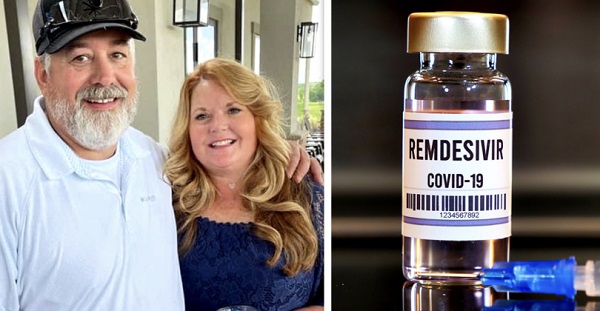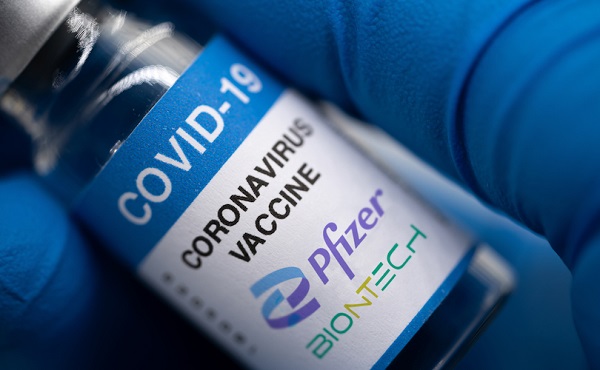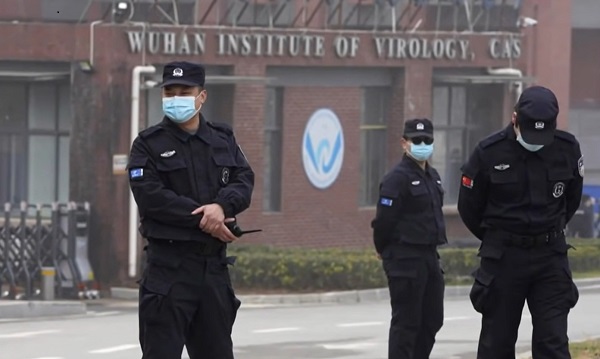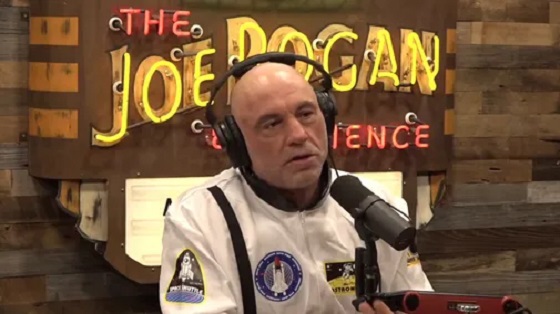COVID-19
‘They lied to us’: Wife of 53-year-old who died hours after receiving Remdesivir speaks out

From LifeSiteNews
By Michael Nevradakis Ph. D., The Defender
Shannon is trying to raise public awareness of the COVID-19 hospital protocols that she believes led to her husband’s death.
In August 2021, 53-year-old Michael E. Pilgrim and his wife Shannon had just celebrated their 29th wedding anniversary and were looking forward to their daughter’s marriage in October.
A former military service member and father of two, Michael was a “good husband and great dad” and enjoyed golf in his spare time.
However, Michael’s fortunes dramatically changed that month when he experienced difficulty breathing and a low oxygen level. On Aug. 17, 2021, he was admitted to Dallas Regional Medical Center, near his hometown of Forney, Texas, with a COVID-19 diagnosis.
Two days later, on Aug. 19, he was dead.
In an interview with The Defender, Shannon Pilgrim said that from the time Michael was admitted to the hospital, she and other members of her family were barred from visiting him and kept in the dark about the treatment he was receiving.
READ: 26% of those prescribed Remdesivir for COVID died, according to Medicare database
According to Shannon, Michael’s medical records showed that doctors barely offered Michael any treatment and emphasized his unvaccinated status. Treatments Michael received included the controversial drug remdesivir — administered hours before his death.
Today, Shannon is trying to raise public awareness of the COVID-19 hospital protocols that she believes led to her husband’s death. She shared extensive medical documentation with The Defender corroborating her story.
‘Contradictory’ medical records contained ‘many gaps’
Shannon recounted that she and Michael became sick at the same time, but she recovered. Meanwhile, Michael remained bedridden. Shannon said Michael was previously healthy and was not taking any medications, but his breathing difficulties “scared” her and led her to call 911 — a decision she now regrets.
“The worst thing that’s ever happened to me is calling 911,” Shannon said. “I thought that I was doing the best thing for Michael. I came to find out that was the worst thing.”
Michael was taken to Dallas Regional Medical Center, a hospital that “has a horrible reputation” according to Shannon. She accused the hospital of refusing her request for Michael to be transferred and did not let her see him after he was admitted.
Shannon said communication with the hospital was limited. “I would call and the nurses would tell me they were on shift change or were busy and couldn’t talk to me.”
Doctors’ interactions with Michael were also limited, Shannon said. “They were just leaving him in a room and they had an iPad popped in to ask him about medical stuff.”
According to Shannon, most of what she’s learned about Michael’s treatment came from the medical records she obtained after his death — even though the records “are completely just contradictory” and contain “many gaps.”
Shannon referred to an instance when a Dallas Regional doctor told her that Michael was doing well — while the records indicate that the doctor called her to say Michael was in critical condition.
Shannon said the records revealed that the hospital “did nothing” for Michael. She said:
On the first day, they basically didn’t do anything except give him oxygen. The next day, he had a chest X-ray and then doctors gave him vitamins … there’s contradictory stuff in here about whether he even had an IV. I can’t even get — from looking at his medical records — if they gave him fluid.
They started giving him Lovenox shots for blood clots. Why? He didn’t have blood clots … Then they started giving him insulin. Why were they giving him insulin? He wasn’t a diabetic.
But according to the medical records, they really didn’t do anything, and that’s what just completely floored me — except they gave him remdesivir.
Remdesivir, which has been linked to deaths and injuries in COVID-19 patients, was commonly administered to patients under the COVID-19 hospital protocols.
According to Shannon, the records indicate that Michael was administered remdesivir on the day of his death. But as she recalls, when she spoke to her husband on the phone that day at noon he showed no signs of being in danger.
“He called me, and I actually got to talk to him. I didn’t talk to him very long, but he wasn’t on a ventilator. He was better,” Shannon said. “I called my kids and I was like, ‘He sounded so good.’ I said, ‘He’s going to be coming home.’ I was so excited.”
Yet, that afternoon, Michael was given remdesivir. According to Shannon, the hospital called her a few hours later to say that Michael was found unresponsive.
“I got hysterical,” Shannon said. “I was asking again and again, ‘Is he OK? Where is he? How do I get in touch?’ … She wouldn’t give me her name. She just said, ‘I’m so sorry.’ She said he coded and they took him to ICU and ‘someone will call you tomorrow’ … And she hung up the phone on me.”
Shannon’s son called Dallas Regional and was told Michael had died. But the family’s difficulties did not end there, as the hospital did not allow them to see Michael’s body.
“We didn’t get to see him until he was embalmed, because they told us that he had COVID,” Shannon said.
Shannon said she believes her husband’s unvaccinated status played a role in the treatment he received. She said Michael had been “cautious” about the COVID-19 vaccine and reluctant to receive it — and that the hospital was aware of this.
“You see all through his medical records, ‘unvaccinated,’ ‘unvaccinated,’ ‘unvaccinated,’” Shannon said. “It’s even written in there, ‘doesn’t trust the vaccine.’”
‘They completely lied’
Shannon said the hospital stonewalled her and her family after Michael’s death.
“They wouldn’t talk to me, they wouldn’t take my calls,” Shannon said. “I kept calling up there and begging to have somebody tell me what happened and nobody would tell me.” The hospital then started pursuing her for unpaid medical bills, she said.
When she did speak to hospital personnel, they misled her. In one instance, she said a doctor told her that while she had the right to have an autopsy performed on Michael’s body, local authorities were “six to eight months behind” and that she’d have to wait that long for the body to be released.
“They completely lied, because later I found out that by law they have to do an autopsy within two weeks, and then it can be six to eight months before you actually get the report. But they have to do it and they have to release the body. But they lied to us and we trusted them,” Shannon said.
Instead, Shannon said the government-funded COVID-19 Bereavement Assistance Fund offered a $10,000 payout for Michael’s death. “They were giving up to $10,000 if the death certificate had COVID on it. And I said, ‘no way in hell will I take that payout.”
Instead, Shannon became an advocate for families that endured similar experiences, by joining the FormerFedsGroup Freedom Foundation. Through her involvement with this advocacy group, Shannon has met with legislators, attorneys and family members of other COVID-19 hospital protocol victims.
“It’s hard, but I don’t want other loved ones to go through what we went through,” Shannon said. “I realized that I want to keep fighting. And so, as hard as it is to keep reliving this timeframe, I will keep doing it … I don’t want people to think he died from COVID, because he didn’t. He died at the hospital because of them. They killed him.”
This article was originally published by The Defender — Children’s Health Defense’s News & Views Website under Creative Commons license CC BY-NC-ND 4.0. Please consider subscribing to The Defender or donating to Children’s Health Defense.
COVID-19
Major new studies link COVID shots to kidney disease, respiratory problems

From LifeSiteNews
Receiving four or more COVID shots was associated with 559% higher likelihood of cold in children, a new study found, and another one linked the shots to higher risk of renal dysfunction.
Two major new studies have been published sounding the alarm about the COVID-19 shots potentially carrying risks of not only respiratory diseases but even kidney injury.
The Washington Stand first drew attention to the studies, published in the International Journal of Infectious Diseases (IJID) and International Journal of Medical Science (IJMS), respectively.
The first examined insurance claims and vaccination records for the entire population of South Korea, filtering out cases of infection prior to the start of the outbreak for a pool of more than 39 million people. It reported that the COVID shots correlated with mixed impacts on other respiratory conditions. A “temporary decline followed by a resurgence of URI [upper respiratory infections] and common cold was observed during and after the COVID-19 pandemic,” it concluded. “In the Post-pandemic period (January 2023–September 2024), the risk of URI and common cold increased with higher COVID-19 vaccine doses,” it noted.
Children in particular, who are known to face the lowest risk from COVID itself, had dramatically higher odds of adverse events the more shots they took. Receiving four or more was associated with 559% higher likelihood of cold, 91% higher likelihood of pneumonia, 83% higher likelihood of URI, and 35% higher likelihood of tuberculosis.
The second study examined records of 2.9 million American adults, half of whom received at least one COVID shot and half of whom did not.
“COVID-19 vaccination was associated with a higher risk of subsequent renal dysfunction, including AKI [acute kidney injury] and dialysis treatment,” it found, citing 15,809 cases versus 11,081. “The cumulative incidence of renal dysfunction was significantly higher in vaccinated than in unvaccinated patients […] At the one-year follow-up, the number of deaths among vaccinated individuals was 7,693, while the number of deaths among unvaccinated individuals was 7,364.” Notably, the study did not find a difference in the “type of COVID-19 vaccine administered.”
The researchers note that this is not simply a matter of correlation, but that a causal mechanism for such results has already been indicated.
“Prior studies have indicated that COVID-19 vaccines can damage several tissues,” they explain.
“The main pathophysiological mechanism of COVID-19 vaccine-related complications involve vascular disruption. COVID-19 vaccination can induce inflammation through interleukins and the nod-like receptor family pyrin domain-containing 3, an inflammatory biomarker. In another study, thrombosis episodes were observed in patients who received different COVID-19 vaccines. Additionally, mRNA COVID-19 vaccines have been associated with the development of myocarditis and related complications […] The development of renal dysfunction can be affected by several biochemical factors [26]. In turn, AKI can increase systemic inflammation and impair the vasculature and red blood cell aggregation. Given that the mechanism underlying COVID-19 vaccine-related complications corresponds to the pathophysiology of kidney disease, we hypothesized that COVID-19 vaccination may cause renal dysfunction, which was supported by the results of this study.”
Launched in the final year of President Donald Trump’s first term in response to COVID-19, Operation Warp Speed (OWS) had the COVID shots ready for use in a fraction of the time any previous vaccine had ever been developed and tested. As LifeSiteNews has extensively covered, a body of evidence steadily accumulated over the following years that they failed to prevent transmission and, more importantly, carried severe risks of their own. COVID was a sticking point for many in Trump’s base, yet he doggedly refused to disavow OWS.
Since leaving office, Trump repeatedly promoted the shots as “one of the greatest achievements of mankind.” The negative reception to such comments got him to drop the subject for a while, but in July 2022, he complained that “we did so much in terms of therapeutics and a word that I’m not allowed to mention. But I’m still proud of that word, because we did that in nine months, and it was supposed to take five years to 12 years. Nobody else could have done it. But I’m not mentioning it in front of my people.”
So far, Trump’s second administration has rolled back several recommendations for the shots but not yet pulled them from the market, despite hiring several vocal critics of the COVID establishment and putting the Department of Health & Human Services under the leadership of America’s most prominent anti-vaccine activist, Robert F. Kennedy Jr. Most recently, the administration has settled on leaving the current vaccines optional but not supporting work to develop successors.
In early August, Kennedy announced the government would be “winding down” almost $500 million worth of mRNA vaccine projects and rejecting future exploration of the technology in favor of more conventional vaccines. Last week, HHS revoked emergency use authorizations (EUA) for the COVID shots, which were used to justify the long-since-rescinded mandates and sidestep other procedural hurdles, and in its place issued “marketing authorization” for those who meet a minimum risk threshold for the following mRNA vaccines: Moderna (6+ months), Pfizer (5+), and Novavax (12+).
“These vaccines are available for all patients who choose them after consulting with their doctors,” Kennedy said, making good on his pledge to “end COVID vaccine mandates, keep vaccines available to people who want them, especially the vulnerable, demand placebo-controlled trials from companies,” and “end the emergency.”
COVID-19
Spy Agencies Cozied Up To Wuhan Virologist Before Lying About Pandemic


From the Daily Caller News Foundation
By Emily Kopp
The Office of the Director of National Intelligence’s (ODNI) hub for foreign biological threats dismissed the intelligence pointing to a lab accident in Wuhan as “misinformation” in January 2021, two former government sources who requested anonymity to discuss sensitive internal meetings told the Daily Caller News Foundation. New documents show that intelligence risked implicating ODNI’s own bioengineering advisor — University of North Carolina professor Ralph Baric.
Baric, who engineered novel coronaviruses with the Wuhan Institute of Virology (WIV), advised ODNI four times a year on biological threats, according to documents released Oct. 30 by Kentucky Sen. Rand Paul.
Dear Readers:
As a nonprofit, we are dependent on the generosity of our readers. \
Please consider making a small donation of any amount here.
Thank you!
Baric did not respond to the DCNF’s requests for comment.
The professor’s ties to American intelligence may run even deeper, the documents reveal, as ODNI facilitated a meeting between the CIA and Baric about a project on coronaviruses in September 2015.
The email exchange with the subject line “Request for Your Expertise” shows an unnamed government official with a CIA-affiliated email address pitching a “possible project” to Baric relating to “[c]oronavirus evolution and possible natural human adaptation.”
The new documents shed a bit of light on a question members of Congress have posed for years: Whether our own intelligence agencies knew more about the likelihood of a lab origin of COVID than they told the public.
“Director Ratcliffe has been on the forefront of this issue since the start of the COVID-19 pandemic and has been committed to transparency and accountability on this issue,” a CIA spokesperson said in a statement. “In January – as one of the Director’s first actions at Langley – CIA made public its assessment that a research-related origin of the COVID-19 pandemic is more likely than a natural origin. CIA will continue to evaluate any available credible new intelligence reporting as appropriate.”
Paul is seeking more documents from ODNI on potential ties between U.S. intelligence and the research in Wuhan as part of an ongoing investigation by the Senate Committee on Homeland Security and Governmental Affairs and has promised public hearings in the coming months.
Director of National Intelligence (DNI) Tulsi Gabbard disbanded the ODNI biological threats office earlier this year following questions from the DCNF about its suppression of COVID origins intelligence in August. Gabbard and a dedicated working group have also been quietly investigating the origins of COVID.
Protecting Their Own

Baric gave a presentation to the ODNI in January 2020 showing that he advised American intelligence that COVID may have emerged from a lab, the documents also indicate. Baric shared that the WIV had sequenced thousands of SARS-like coronaviruses, including strains capable of epidemics, the slides show.

Baric noted that the Wuhan lab does this work under low biosafety levels despite the ability of some of these viruses to infect and grow in human lung cells.
What Baric omitted: He had submitted a grant application in 2018 with intentions to conduct research to make coronaviruses with the same rare features seen in COVID while concealing the Wuhan lab’s low biosafety level, jotting in the margins of a draft of the grant application that Americans would “freak out” if they knew about the shoddy standards.
One year after Baric’s presentation, ODNI had hardened against the lab leak hypothesis.
When State Department officials pushed to declassify certain intelligence related to a plausible lab leak in January 2021, the ODNI expressed concerns that it would “call out actions that we ourselves are doing.”
Former ODNI National Counterproliferation and Biosecurity Center (NCBC) Director Kathryn Brinsfield, a medical doctor, also dismissed a January 2021 presentation by government officials about a plausible lab origin of COVID as “misinformation,” two sources told the DCNF. Her top aide Zach Bernstein, who possesses a master’s degree in security studies but no scientific credentials, also dismissed the presentation, according to three sources.
Gabbard disbanded NCBC in August following questions from the DCNF about its role in suppressing COVID origins intelligence.
But in the years preceding Gabbard’s takeover of the intelligence community’s central office, the ODNI’s public reports omitted any analysis of COVID’s viral genome. One intelligence agency filed a formal complaint about this glaring omission, the DCNF reported.
Scientists often received fierce pushback from former National Intelligence Council official Adrienne Keen, who helped steward former President Joe Biden’s 90-day review into COVID’s origins, an official told the DCNF. Paul’s request for records from ODNI includes a request for some of Keen’s communications.
Brinsfield and Keen did not respond to requests for comment.
Unanswered Questions
Despite the new disclosures, the precise nature of the CIA’s interest in Baric’s coronavirus work remains unknown. The documents do not include any further details about the work that the CIA and Baric may or may not have undertaken.
The U.S. Agency for International Development (USAID) funded the discovery of novel coronaviruses and shipped the samples to Wuhan through a 2009-2020 program called PREDICT, the DCNF reported in July. USAID sometimes acted as a CIA front before Trump dismantled it earlier this year — but no evidence exists that the CIA directed PREDICT.
An unnamed FBI special agent was in communication with Baric about responding to public requests for his research and emails with the Wuhan lab through the North Carolina Freedom of Information Act, according to a 2024 congressional letter, but details about the contact between the FBI and Baric also remain uncertain.
The CIA was slow to acknowledge that a lab was the pandemic’s most likely source, an assessment that the CIA made public more than five years after the pandemic emerged and well after the FBI and the Department of Energy.
In early 2020, when Trump’s Deputy National Security Advisor Matt Pottinger tasked CIA analysts to dig into the matter, they came up empty, according to a New York Times report. Instead, anonymous sources smeared Pottinger as having a “conspiratorial view” of the Chinese Communist Party.
Trump’s current CIA Director John Ratcliffe, who served as the DNI from May 2020 to January 2021, revealed in a 2023 Wall Street Journal op-ed that he had pushed for the declassification of COVID origins intelligence as the DNI but that he “faced constant opposition, particularly from Langley.”
-

 Business1 day ago
Business1 day agoParliamentary Budget Officer begs Carney to cut back on spending
-

 International2 days ago
International2 days agoBondi and Patel deliver explosive “Clinton Corruption Files” to Congress
-

 International2 days ago
International2 days agoState Department designates European Antifa groups foreign terror organizations
-

 International2 days ago
International2 days agoUS announces Operation Southern Spear, targeting narco-terrorists
-

 Censorship Industrial Complex2 days ago
Censorship Industrial Complex2 days agoEU’s “Democracy Shield” Centralizes Control Over Online Speech
-

 Addictions1 day ago
Addictions1 day agoCanadian gov’t not stopping drug injection sites from being set up near schools, daycares
-

 International2 days ago
International2 days agoIs America drifting toward civil war? Joe Rogan thinks so
-

 Bruce Dowbiggin2 days ago
Bruce Dowbiggin2 days agoDEI Or Die: Out With Remembrance, In With Replacement









